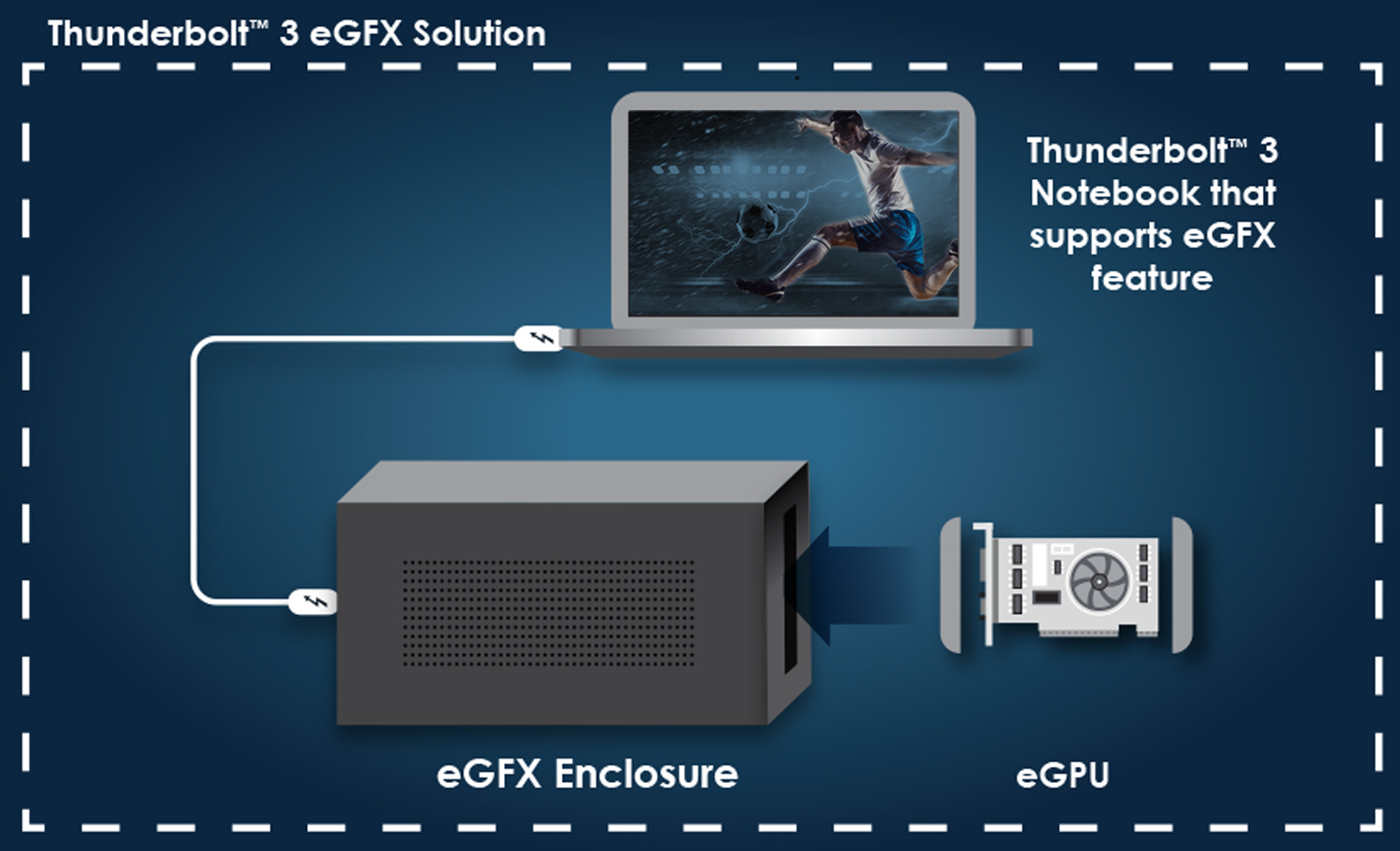A New Choice for Heavy Graphics Users
With Thunderbolt 3 External Graphics (eGFX) gamers and heavy graphics users who are mobile, now have more options to get the graphics experiences they want.
Enjoy plug-and-play high-performance graphics on the latest thin-and-light laptops, allowing you to work and play hard with one machine, all enabled by Thunderbolt 3.
There are two different acronyms — eGFX and eGPU used interchangeably in the industry. But there is a difference. This blog explains these differences and the way Intel encourages the manufacturers of its Thunderbolt 3 certified systems and devices to use them so as not create confusion to consumers.
What do eGFX and eGPU mean?
eGFX is an abbreviation for External Graphics and eGPU is an abbreviation for External Graphics Processing Unit.
External Graphics (eGFX) is a more generic term that is used to refer to the external device and/or the feature enabled in the host system that allows a Graphics Processing Unit (GPU) to be used externally to the PC. In this context, the term External GPU (eGPU) is used to refer to the actual GPU (i.e., the graphics card) which is physically installed within an eGFX enclosure that is connected to the PC using a Thunderbolt 3 cable.
Intel’s Thunderbolt 3 certification now includes verification eGFX functionality for devices and host systems. We do not validate individual components, for example the eGPU. The full validation is the responsibility of the eGFX device and PC manufacturers.
We recommend using and maintaining the two terms separately, so that the meaning is crystal clear.
Stay tuned for more updates, and be sure to follow us on Instagram for Thunderbolt product updates and shares from the #Thunderbolt3 user and partner community.



Follow Intel & Learn More About Thunderbolt™ Subscribe to Intel's YouTube Channel